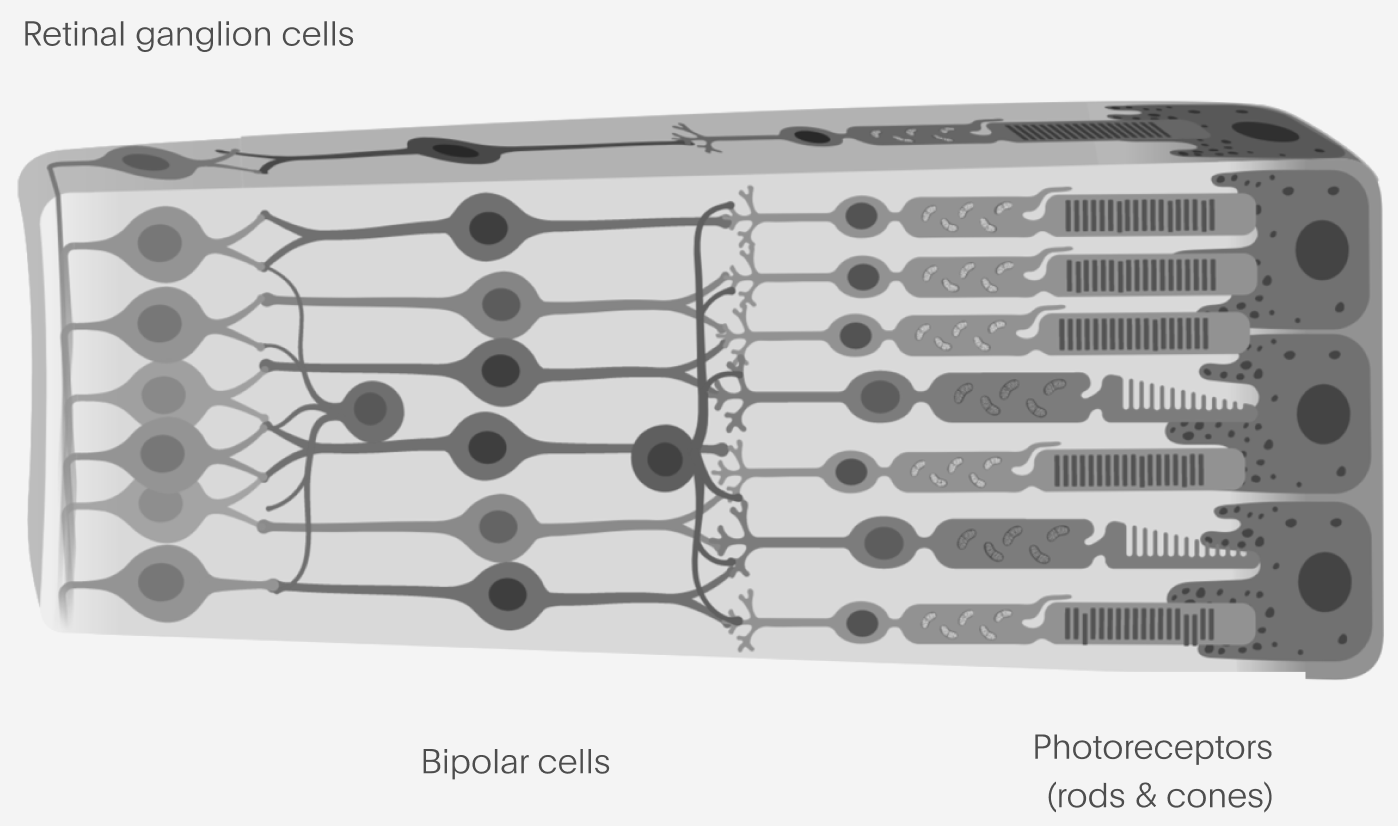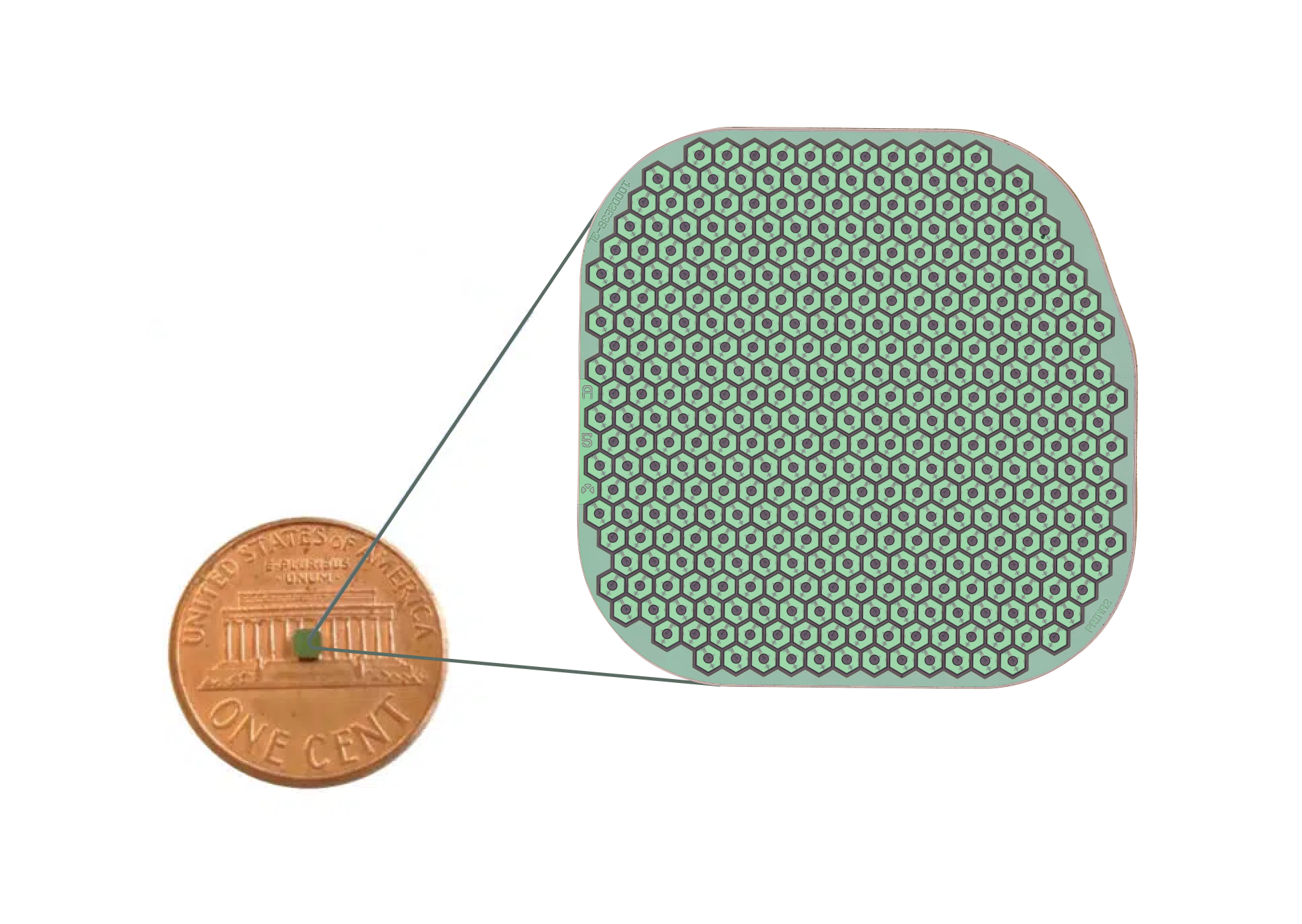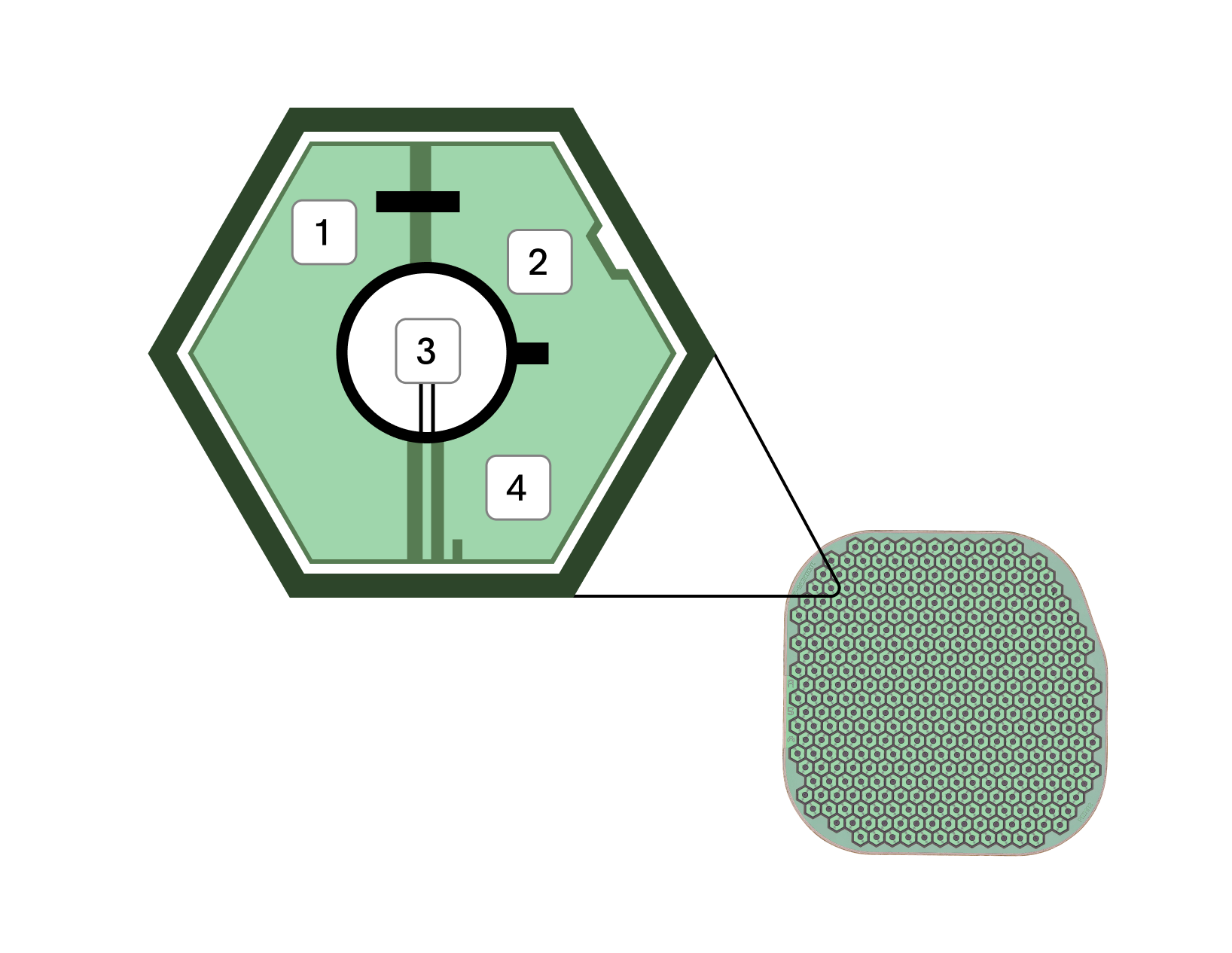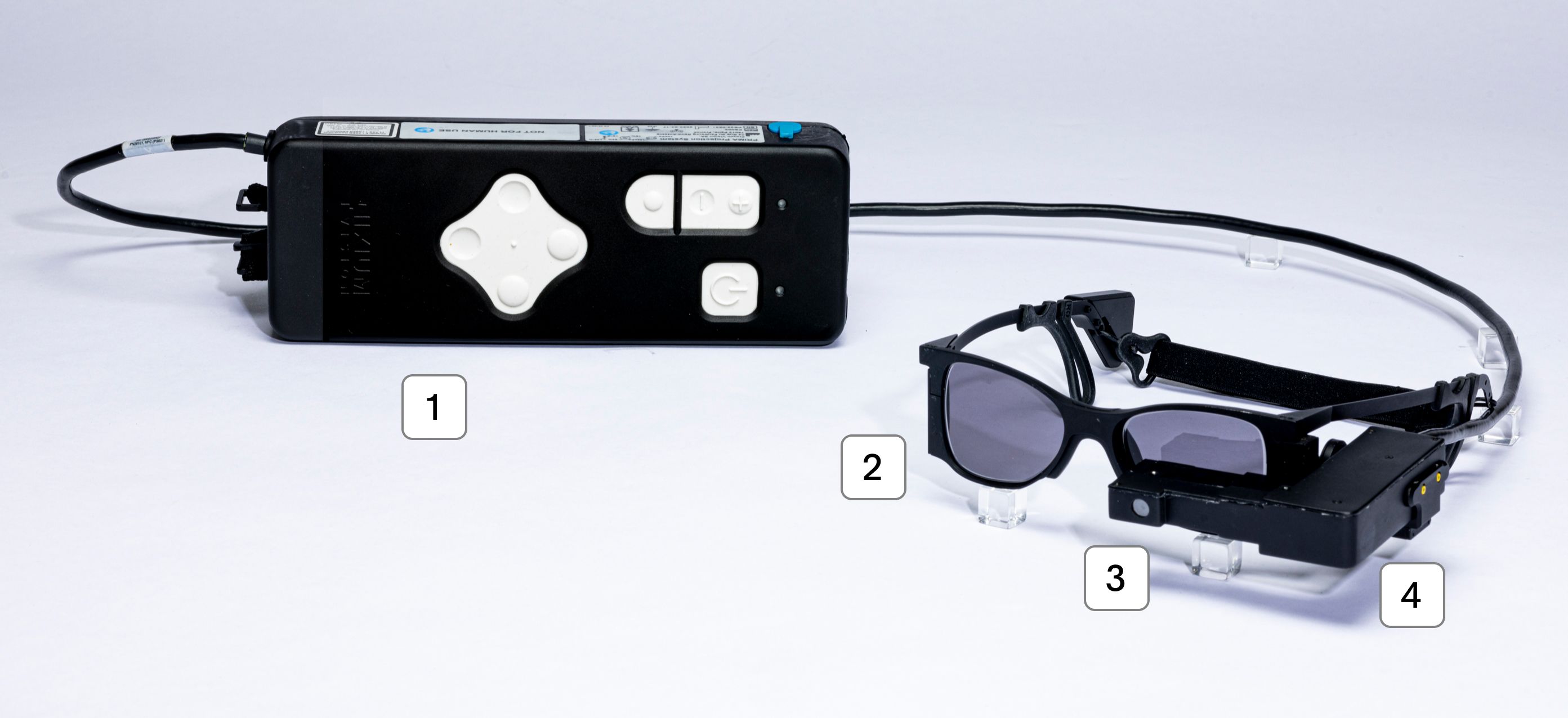Pocket processor allows for zoom and brightness adjustment.
PRIMA
Fully wireless photovoltaic stimulation array
PRIMA restores vision by directly activating the retina if rods and cones have been lost.
In degenerative retinal diseases, such as age-related macular degeneration or retinitis pigmentosa, the photoreceptors (rods and cones) fail, leading to blindness. By stimulating the bipolar cells directly, bypassing the lost rods and cones, visual input can be restored to the brain.

Science PRIMA works by stimulating the remaining cells in the retina
The PRIMA system consists of two parts. First, a tiny implanted photovoltaic stimulation array is placed under the retina. Second, a special pair of glasses with a built-in projector sends light signals to the implanted device, enabling it to stimulate the retina.

PRIMA has 378 light-powered pixels
The PRIMA implant is a honeycomb pattern of independently controlled pixels that convert infrared light into electrical signals.
Each pixel responds to infrared light and stimulates neurons
Each pixel has two diodes (labeled 1 and 2), connected in series between the active (3) and return (4) electrodes.


PRIMA Glasses
This special pair of glasses has integrated optics that direct light to the implanted device, providing it with both power and visual data.
Sun lenses attenuate ambient light levels for optimal use.
Camera captures visual information.
Projection module sends patterns of infrared light into the eye.
PRIMA Clinical Trials Status Tracker
Macular Degeneration
Age-related macular degeneration (AMD) is a degenerative disease that causes a progressive loss of central vision.
Retinitis Pigmentosa
Retinitis pigmentosa (RP) refers to a group of inherited diseases causing retinal degeneration and a loss of peripheral and night vision over time.
Stargardt Disease
Stargardt disease is a genetic eye disorder that causes a progressive loss of central vision.
The PRIMA pivotal study is indicated for advanced atrophic dry age-related macular degeneration, also known as geographic atrophy (GA) (NCT04676854). This study is ongoing with results expected to be released by the end of 2024.
The PRIMA feasibility studies are indicated for GA. Results from the US study (NCT 03392324) and European study (NCT 03333954) measuring near visual acuity measurements at months 12 and 24 post-implantation are available.
Related Publications
Learn about the research and scientific studies supporting the PRIMA implant.
Long-term observations of macular thickness after subretinal implantation of a photovoltaic prosthesis in patients with atrophic age-related macular degeneration
Simultaneous perception of prosthetic and natural vision in AMD patients
Photovoltaic Restoration of Central Vision in Atrophic Age-Related Macular Degeneration
Restoring sight with retinal prostheses
Optimization of pillar electrodes in subretinal prosthesis for enhanced proximity to target neurons
The Science Ecosystem
Software
Intuitive and comprehensive suite of tools to design, program, and run neuroscience experiments.
Headstages
Electronics that process, store, and transmit signals between probes and the network.
Probes
Tissue-contacting elements designed for high precision detection and stimulation of neural signals.
Fabrication
Manufacturing, assembly and packaging of micro scale MEMS and IC devices.
